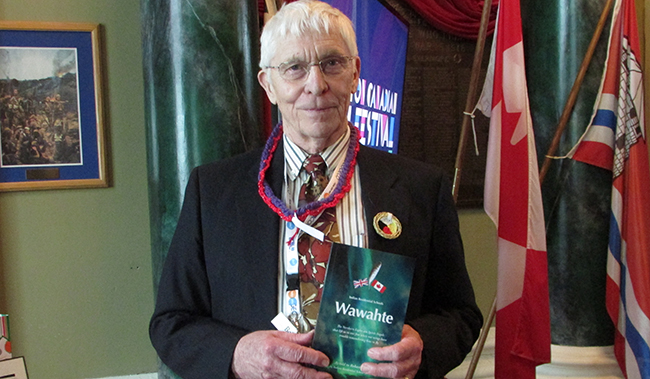Film Review: ‘Wawahte’ a step towards reconciliation

Reviewed by Carrie MacKenzie
“Wawahte” premiered February 27, 2016 at the Kingston Canadian Film Festival. This moving and honest film examines the experiences of three residential school survivors, Elders Esther, Bunnie and Stanley. Their stories are told in voice-overs by actors using their own words. It is based on the book “Wawahte” by Robert P. Wells and is produced and directed by John Sanfilippo. The book and film came out of a promise Mr. Wells made as a nine year-old to an Elder, a friend, to tell the story of the treatment of Canada’s Indigenous people. After writing “Wawahte” Mr. Wells approached Mr. Sanfilippo the owner of a sound studio, about making an audio book. They then discussed making it into a movie, hoping it would become an educational tool and accessible to anyone. This, I feel, was achieved with great success.
A number of elements make “Wawahte” a film that people should see and learn from. One is the tone, calm and peaceful. There is no anger, blame or self pity. The stories are haunting, told in a poignant yet gentle style. You have an emotional response to the stories but are not overwhelmed by them. As a result you do not turn away but remain engaged, hearing the rest of the story, learning about our shared history. I felt I was sitting one on one with this group of Elders listening to their stories. This was achieved by having these stories told in the survivor’s own words, making them real and honest.
The cinematography also adds to “Wawahte’s” powerful impact and accessibility. While the stories are being told, predominately black and white pictures from various residential schools are shown as a slide show. They show life at residential schools without being graphic; some are even of the survivors themselves. The pictures are used to illustrate what the survivor is talking about. There are both positive and negative images. In some the people look sad, in others they are smiling. Then at certain points the movie uses video with powerful effect. For example, when Esther is talking about traveling by train to the residential school, the camera is looking out the window of a train and the landscape is flying by.
The use of music also enhances this film. There is no music during the voice-overs, so nothing distracts from the impact of the words. It is the stories and their delivery by the actors that carries the tone of the film, not the music or pictures. The music, when heard, is used effectively to bookend the stories. The minimal use of music combined with the mostly black and white pictures also mirrors the starkness and bleakness of the life that many experienced at the residential schools.
I also applaud the fact that there was an affirming story included illustrating that not all children attending residential schools had negative experiences. This was Bunnie’s story. Bunnie tells the audience she was loved and well cared for at the residential school she attended. She says that when her sons were born she knew how to love them because she had been shown love as a child at the residential school. Bunnie also clearly acknowledges this was not the case for most of the children attending residential schools. This adds to the integrity of “Wawahte.”
To see this movie is to take a step towards reconciliation and healing the wounds that have devastated Indigenous society.

